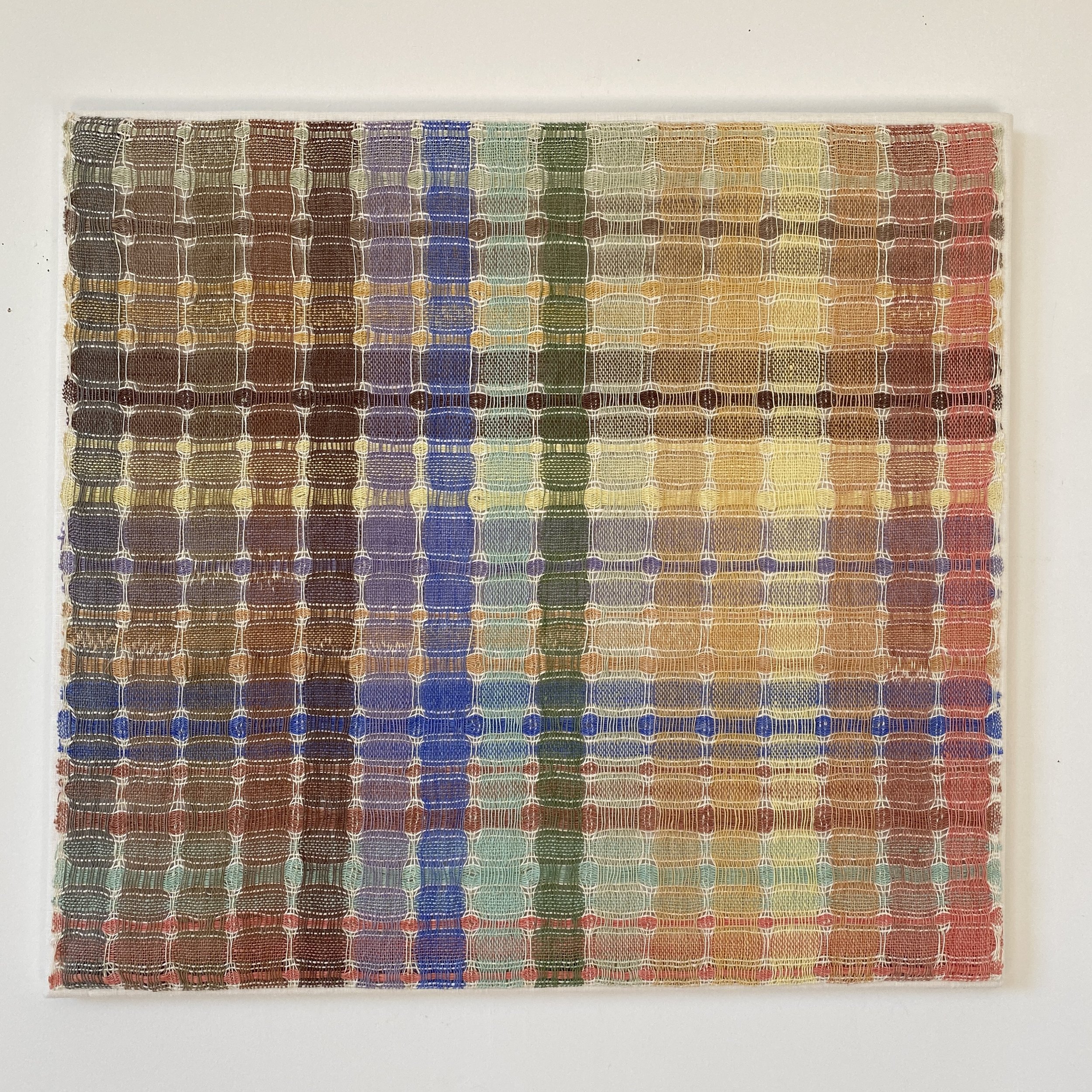Colors of the Earth by Helen Bower Jones
Helen Bower Jones
One of the first things people say when they look at my work is “what lovely colors”, and I guess color is the factor that drives me most in creating my work.
At some point many weavers start to experiment with dyeing or painting their thread or yarn, as this way you can control much more closely the final effect when combining the colors in the warp and the weft. When I reached this stage in my work, I started out using commercial fiber-reactive cold water dyes, but decided for several reasons that I didn’t want to use chemical dyes or plastic-based fabric paints (such as acrylics) and began experimenting with natural dye sources.
The most traditional are plant based dyes, such as madder (red), indigo (blue), or weld (yellow), but to achieve the specific color you desire requires rather a precise, scientific process. Despite being a weaver I am not a very precise person, so I looked elsewhere.
Another very ancient method of using color is from earth, clays and minerals. The earliest known art was made this way, such as the wall paintings in the Lascaux caves in France, created using iron oxides and ochres.
Earth pigments are readily available in powdered form and have been used for centuries the world over to make artists’ paints. Their names are wonderfully evocative: Ancient Green Earth, Venetian Red, Rose Earth, Cyprus Umber Warm. What I love about using them, apart from their rich tones, is that they are stable - the color you see is what you get, and they have good light-fastness compared with plant dyes.
Helen Bower Jones
There are essentially two methods to apply them to fiber: you can paint them on the surface of a piece of cloth, or you can apply them to the threads before weaving by painting or immersion. The latter two are what I have been doing most recently in my practice. As they are not dyes they will not bind to the fiber permanently without help so I use home-made soy milk as a binder, another traditional method used in Japan and elsewhere. The pigment particles are suspended in the milk and are bonded to the surface of the natural fiber by the protein molecules in the liquid. I love the process because it is essentially non-toxic, for me and the environment, and requires no rinsing out, so almost no water is wasted.
painting trials - Cyprus Green and Red Ocher
immersion method
Helen Bower Jones is a designer-weaver based in North Carolina but born and bred in Yorkshire, England. Before pursuing creative work in fiber she studied the history of textiles and pattern design for many years, which is a big influence on her work.
Prior to moving to North Carolina she was Assistant Curator at the historic house museum Temple Newsam, Leeds, England, where among many projects she catalogued an important collection of historic furnishing textiles, published as Textiles at Temple Newsam: the Roger Warner Collection (Leeds Museums & Galleries, 2000).
Presently she is exploring the possibilities of traditional patterns and weaving structures applied in non-traditional ways. The built environment and other forms of the decorative arts have always been inspiration but now, living in the more rural environs of Hillsborough, NC, the shapes, colours and textures found in nature can be found in her work too.



